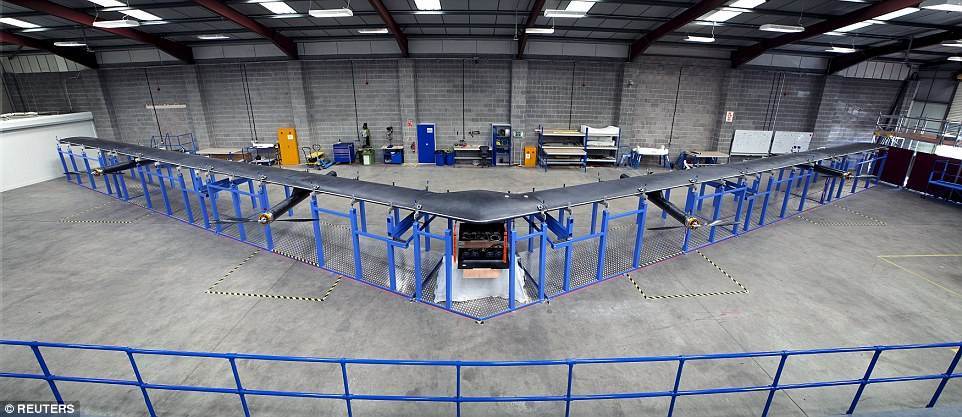To achieve its objective of providing Internet access to 4 billion people, Facebook is taking to the skies. Yesterday, the company announced a major milestone in the development and testing of its Aquila drone. Facebook said it has finished construction on its first aircraft, which is now ready for flight testing.
Facebook first announced its ambition to design a fleet of drones to provide Internet connectivity to people living in remote parts of the world more than a year ago. When deployed, the drones will be able to circle remote regions for up to 90 days, beaming connectivity down from altitudes of 60,000 to 90,000 feet. The Aquila drone has the wingspan of a 737 but weighs less than a car, thanks to its unique design and carbon fiber frame.
Reaching the Last 10 Percent
“Since we launched Internet.org, it’s been our mission to find ways to provide Internet connectivity to the more than 4 billion people who are not yet online,” Jay Parikh, Facebook’s VP of global engineering and infrastructure, said in the company’s news blog.
Internet.org is Facebook’s initiative to bring free, basic Internet access through mobile providers to people who are not yet online. Earlier this week, Facebook announced that it had reached agreements with mobile providers in 17 countries to provide more than one billion people with free connectivity for basic services.
Parikh said the problem is that 3G Internet connections would not reach everyone. “Ten percent of the world’s population lives in remote locations with no Internet infrastructure, and the kinds of infrastructure technologies used everywhere else — things like fiber-optic cable, microwave repeaters and cell towers — may be a challenge to deploy cost-effectively in these regions.”
Facebook’s Aquila drone, which was developed by the company’s Connectivity Lab and built by its U.K. aerospace team, is the solution to that issue, Parikh said. “Our goal is to accelerate the development of a new set of technologies that can drastically change the economics of deploying Internet infrastructure.”
Internet Delivered by Laser
According to Parikh, Facebook is exploring a number of approaches to the problem, including aircraft, satellites and terrestrial solutions. “Our intention is not to build networks and then operate them ourselves, but rather to quickly advance the state of these technologies to the point that they become viable solutions for operators and other partners to deploy,” he said.
In addition to building the aircraft, Facebook also announced that it has achieved a significant performance breakthrough with a new laser that would allow the drone to beam data 10 times faster than previous technologies. While the laser has successfully delivered tens of gigabytes of data per second in the lab, the company said it would now be testing the technology under real-world conditions.







